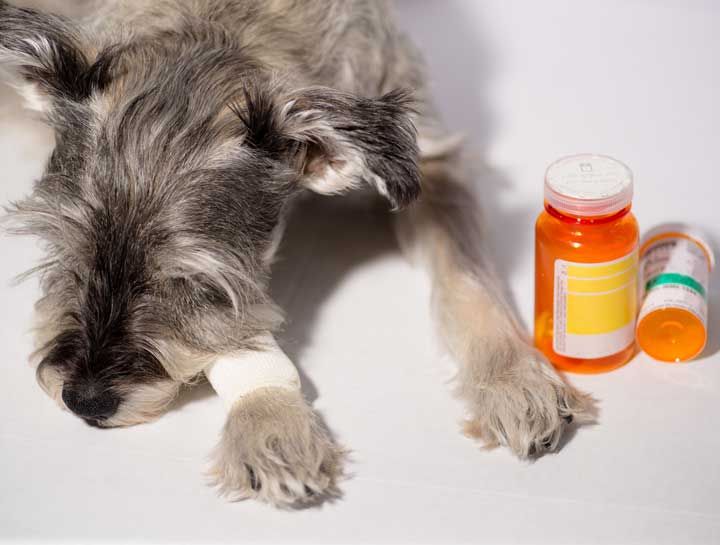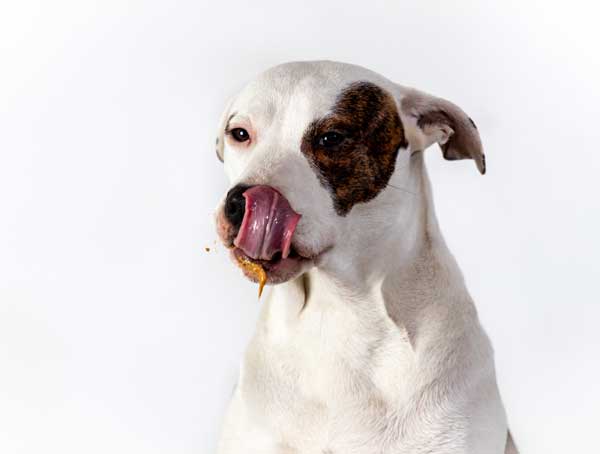Take the Stress Out of Medicating Your Pet

Asking for help can be difficult, but for all the pet owners who struggle to give their pets their pills, ointments, and drops, asking for help should be easier than continuing to struggle. Medina Veterinary Clinic has compiled this guide, to help alleviate the stress of medicating your pet.
#1: Ask questions about medicating your pet
We are committed to providing you with the knowledge you need to care for your pet, so never hesitate to ask questions about your pet’s prescription, such as:
- Are other options available? — If you are worried your pet will be difficult to medicate, let us know. The medication may be available in a different formula, like a liquid, flavored tablets, or a one-time injection. Compounding pharmacies can create pet treats or meat-flavored liquids from many drugs.
- Can you show me? — Our team can help you understand proper techniques, as well as insider tips for safe pet restraint. Ask us for a demonstration that you can video and watch again at home.
#2: Make medicating a positive experience for your pet
Pets develop strong associations with their environment, and negative memories will affect future behavior. Do you use the same kitchen corner to give them their ear meds? Do you always hide their pills in the same food? Break away from old habits, and develop a new routine:
- Relocate — Select a new location in your home to give medication.
- Choose a new food — If someone hands you free French fries that taste like bitter chalk, you likely won’t crave fries anymore. Your pet feels the same way about the foods you have used—unsuccessfully—to hide their medication. Try different foods every time.
- Change your approach — Leaning over your pet or reaching out for them are threatening gestures. Sit beside your pet to medicate them. Place small pets next to you on a couch or bed, or on your lap with their back to you, so they won’t retreat.
- Do not surprise your pet — Always touch a less sensitive area before your target. For example, touch your dog’s shoulder, and then glide your hand slowly to their neck, ear, or eye. Maintain contact so you do not surprise your pet.
#3: Use pet medication tools safely
If your pet must be pilled manually (i.e., the medication cannot be wrapped in a treat), or restrained, to prevent harming them or others, ensure you have the appropriate tools, and know how to use them safely.
- Pill popper or pill gun — This rod-shaped device is effective for delivering pills while protecting your fingers. Ask us for a demonstration, or check out this animated video tutorial to learn proper pill gun placement.
- Towel wraps — Towel wraps or body wraps can prevent cats from swatting or escaping. This technique takes practice, but this video is a great step-by-step guide. Build positive associations with the towel by feeding your cat there, and rewarding each step.
- Muzzles — A dog who comfortably wears a muzzle will be less likely to stress and struggle.
#4: Preoccupy your pet with high value treats

Would work be as pleasurable without the reward of a paycheck? Teach your pet that medication is no threat, by pairing the pill with irresistible food rewards. After checking with your veterinarian, try the following foods in small amounts, if you have not used them previously:
- Peanut butter
- Cream cheese
- Cheese spread
- Wet pet food, preferably in paté formulas
- Low-fat, xylitol-free yogurt
For ear or topical medications, smear the soft foods on a pet treat mat, inside a coffee mug, or an easy-to-clean vertical surface (e.g., a bathtub wall, or a glass door). Once your pet focuses on the food, you can apply the medication. A food-coated spoon can be used to direct your pet’s gaze upward for eye drops.
#5: Use tricks to medicate pets orally
If a hidden pill does not fool your pet, try a different presentation:
- Hide-the-pill method — Add flour to sticky foods to make them moldable. Use only enough to coat the pill, because treats that are too big require chewing.
- The sandwich method — Use five to six identical treats, with only one wrapping a pill. Give them to your pet in rapid succession, with the pilled treat in the middle, followed by two regular treats. Your pet should always see a treat coming to encourage swallowing.
- The syringe shell game — Fill several small oral syringes with thinned wet food or yogurt. Slide a syringe inside your pet’s cheek pocket, and dose them with a treat. Once your pet happily accepts the treat syringe, use the sandwich method, giving them treat syringes before and after the medication syringe.
- Tricks for treats — Using treats like the sandwich method, ask your pet to perform their favorite tricks, rewarding each one. Somewhere in the middle, give them the pill treat, and then quickly ask for the next trick.
When you medicate your pet, focus on their surroundings, not only on the action. By evaluating your pet’s entire experience, you may find that their stress stems from the environment, the physical restraint, or negative associations with your reactions or the tools, more than the medicine. However, if you need any assistance to medicate your pet, or would like to discuss alternative formulations, contact Medina Veterinary Clinic.
By Medina Veterinary Clinic | August 13th, 2021
